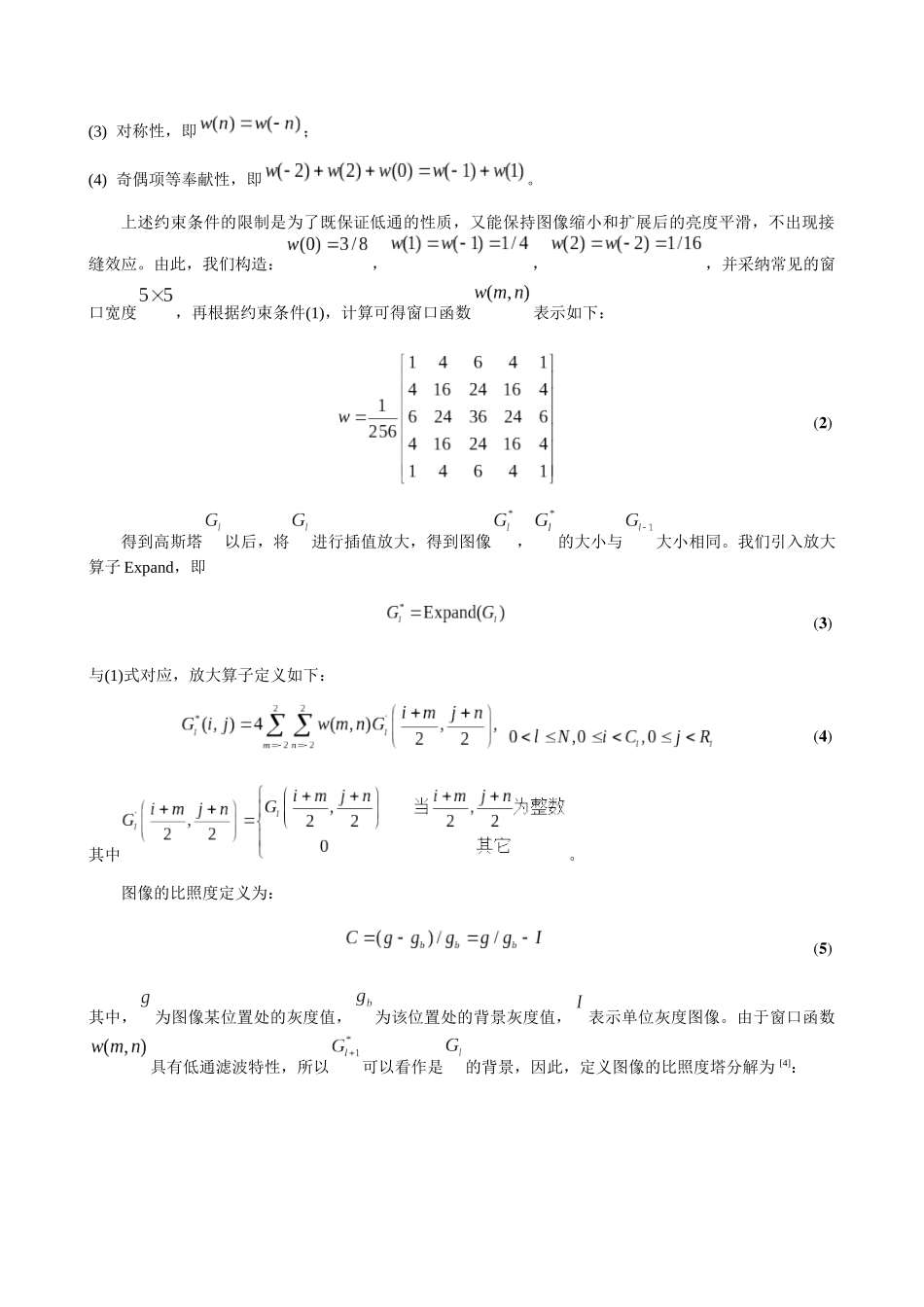基于 CP 和多小波 HMT 模型的克隆选择遥感图像融合*金海燕 1, 2 焦李成 1(1西安电子科技大学智能信息处理讨论所 陕西西安,7100712西安理工大学计算机科学与工程学院 陕西西安,710048)摘要:如何得到有效的融合系数是图像融合的关键。本文从图像的统计特性出发,构造了比照度塔〔CP〕和 GHM 多小波,建立了多小波 HMT 模型以捕获多小波系数之间的相关性。同时,将进化计算思想—免疫克隆选择〔ICS〕算法引入到图像融合处理中,用来优化融合系数,较好地实现了多传感器遥感图像的融合。仿真实验证明,与传统的小波变换和多小波变换方法相比,本文方法得到的融合图像有效地保存了图像的细节和纹理信息,图像的信息熵值保持在较高水平,平均梯度值比小波变换和多小波变换方法平均分别提高了 1.3 和 2.3,标准差值平均分别提高了 8.0 和 8.8。关键词:图像融合 免疫克隆选择 多小波变换 HMT 模型 CP 分解Clonal Selection Remote Sensing Image Fusion Based on CP and Multiwavelet HMT Models JIN Haiyan1, 2, JIAO Licheng2(1Institute of Intelligent information processing, Xidian University, Xi’an 710071, China2School of Computer Science & Engineering, Xi’an University of Technology, Xi’an 710048,China)Abstract: How to obtain efficient fusion coefficients is the key problem in image fusion processing. In terms of the statistical characteristic of images, CP decomposition and GHM multiwavelets are constructed and using multiwavelet domain HMT models to capture the dependencies of coefficients in this article. Furthermore, the evolution computation idea — immune clonal selection (ICS) algorithm is introduced to optimize the fusion coefficients for better fusion results. Fusion performance is evaluated through subjective inspection, as well as objective fusion performance measurements. Results clearly demonstrate the superiority of this new approach when compared to conventional wavelets and multiwavelet systems as information entropy (IE) values keep at a high level, and...


